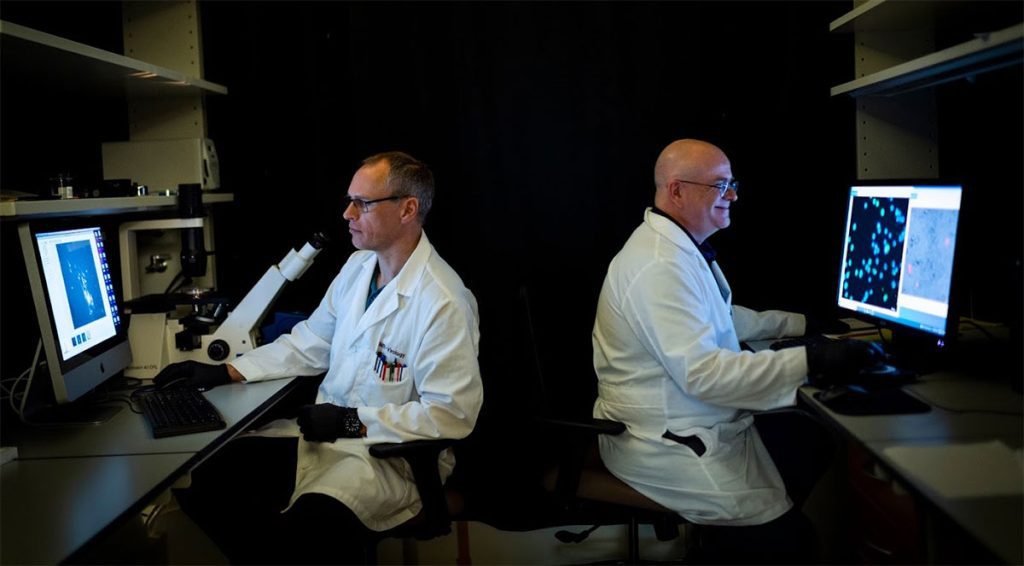26 Jul Researchers illuminate HIV in cell-to-cell attack mode

Johan den Boon and James Bruce in the Ahlquist Lab
A project combining basic virology, mass spectrometry and computation has given scientists a greatly expanded, in-depth look at the cell-to-cell transmission of HIV, and the cascading changes within cells that spark this potent attack.
Paul Ahlquist, director of the Rowe Center for Virology at the Morgridge Institute for Research, led the effort to understand how HIV — the virus that causes AIDS — reorganizes the infected cell, making literally thousands of changes to the host proteome, the complex total protein pool of the cell, to assist in transmitting virus to healthy immune cells.
Viruses are usually thought of as being spread when infectious virion particles are released to roam free of the infected cell. However, HIV-infected cells most efficiently transmit infection by forming direct cell-to-cell contacts with uninfected cells called “virological synapses” — not unlike the connections nerve cells make to communicate with one another.
The connection takes place when an HIV envelope protein on the infected cell surface “grabs” its receptor, known as CD4, on an uninfected T cell. The resulting patches of cell-to-cell contact are used to transmit infectious virions directly to the uninfected cell.
The new results show that making this cell-to-cell connection unleashes a hornet’s nest of activity in the infected cell to drive transmission.
Ahlquist, also a UW-Madison professor of molecular virology, oncology and plant pathology, teamed with Morgridge and UW-Madison mass spectrometry pioneer Josh Coon to capture these proteomic changes at both the 5-minute and 60-minute stage after CD4 contact. Morgridge Virology Investigator and UW-Madison professor Anthony Gitter’s group used advanced computation to identify the significant changes in the HIV-infected cell proteome and organize them into functional pathways for further analysis.
A further key collaborator on this study was UW-Madison professor Nathan Sherer, whose work on many aspects of HIV biology includes pivotal early contributions to recognizing the role of direct cell-to-cell contacts in infection spread by HIV and its relatives. Lead authors on the paper were James Bruce and Eunju Park. The results, first published on July 17 in the journal PLOS Pathogens, provide virologists with a wealth of data for ongoing analysis, along with multiple important conclusions and leads.



